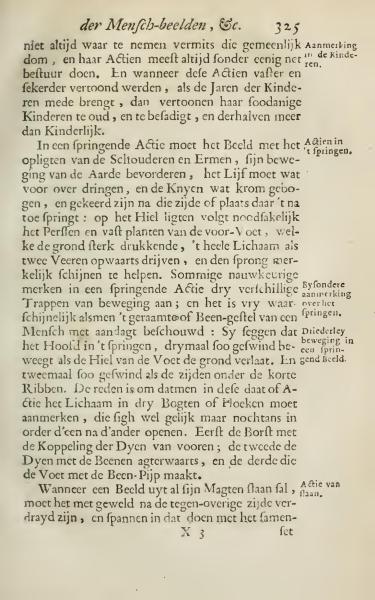Of Human Figures, etc.
325
It is not always observable because they commonly act without any clear guidance. And when these actions are shown more firmly and certainly, as age comes with childhood, they show children too mature, and too controlled, and therefore more than childlike.
In a jumping action, the image must, by lifting the shoulders and arms, promote its movement from the ground; the body must lean forward a bit, and bend the knees slightly, being oriented towards the side or place where it jumps: lifting on the heel must necessarily be followed by pressing and firmly planting the front foot, pressing the ground strongly, driving the whole body upwards as if by two springs, and significantly aiding the jump. Some keen observers note three distinct stages of movement in a jumping action; and it is quite likely when considering the skeletal structure of a person: They say that the head, during the jump, moves three times as fast as the heel leaves the ground and twice as fast as the sides under the short ribs. The reason is that in this act or action, the body must be observed in three bends or angles that seem similar but open in sequence. First, the chest with the connection of the thighs at the front; second, the thighs with the legs backward, and third, the foot with the shinbone.
When an image fails in all its strengths, it must be turned vigorously to the opposite side, and exert tension in doing so in the connection.
Notes: In Children
Actions in jumping.
Special notice on jumping.
Threefold movement in a jumping image.
Action of falling.
Translation Notes: The term ‘Beeld’ is translated as ‘image’ but refers to both artistic and physical forms. 'Bogten' refers to bends or curves of the body in motion and should be understood as postural dynamics in motion representation.
The text discusses the dynamics of movement, especially jumping, in artistic depictions of human figures. It explains how lifting the shoulders and arms, along with bending the knees, assists in jumping, and describes the three stages of motion in such actions. The observation includes details on the speed and turns of various body parts during motion.
